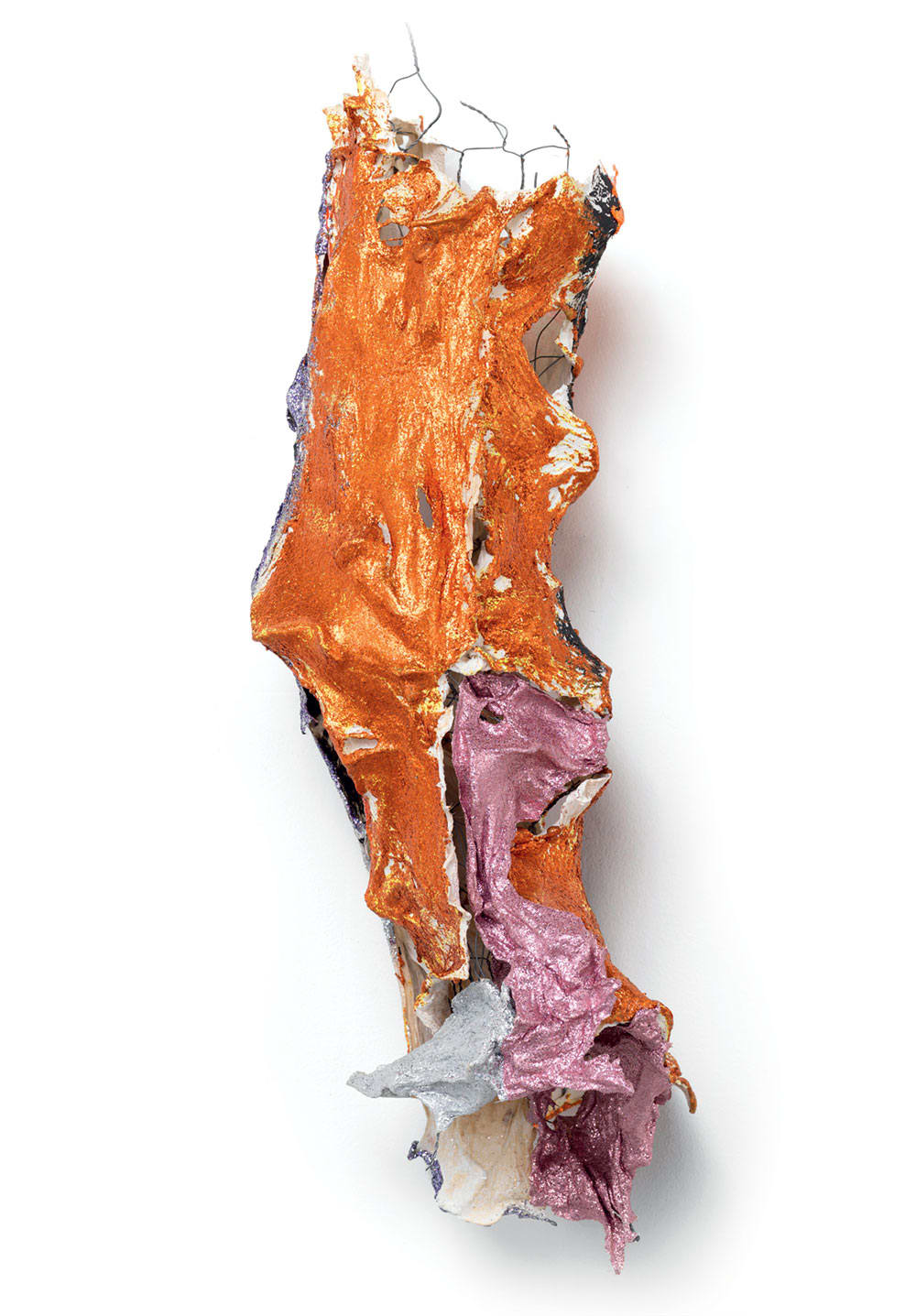
From BOMB: “There is something unapologetic, irreverent, and uncompromisingly bold in Lynda Benglis's work. Her practice radiates the joys of living and making art. Whenever I encounter one of her works, I imagine her dancing, having a chat, or sometimes even wrestling with her favorite materials: chicken wire, rubber, paper, clay, and glitter. When I first met Benglis last spring, at the opening of her multivenue exhibition in Bergen, Norway, she was deeply immersed in a conversation with a young artist about molding, twisting, cutting, and gluing. She didn't seem to bother about the crowd waiting to congratulate and greet her. All her attention was directed at the artist and their discussion of form and process. Benglis is an artist who thinks through materials and draws on her in-depth knowledge of traditions such as Native American pottery.
I recently mentioned Benglis's work during a studio visit, and I found myself describing it as open, unguarded, and sensuous, yet also prickly and aggressive—like a Kathy Acker novel. Like Acker, Benglis has committed herself to a form of art that can enact rather than resolve all the binaries and contradictions that shape a life.
Federica Bueti Your new works seem like parts of the zodiac to me. The ceramic pieces are more earthly—you have Taurus, Capricorn—and the paper works are more airy—like Aquarius.
Lynda Benglis What a nice way of putting it! With the paper pieces, I thought of them like vases, but open at either end. My first wall pieces were all kind of open. I thought of spirits crawling inside or moving through them. These new works are also very much about that interior space and their relationship to the wall. They're handmade paper over chicken wire, so there are all sorts of openings in the materials, too. They're porous, like skin.
FB You use a lot of chicken wire. What do you like about it?
LB I like how it can take on these curvy shapes. I stretch the wire while I make a shape—it takes two people, four hands, to contort the material, to counter the tautness and the original curvature of the wire. Then I put paper on it, and that's how I find the forms. For me, it has always been related to the canvas in the broad sense. I'm making my own surfaces. So these pieces are about being what they are—chicken wire and paper—but also about the illusion of form.
FB Do you feel that the material has a life and an intelligence of its own?
LB Absolutely. I'm making the bones; the material is the flesh. Or I could say I'm making the surface that the skin rests on. I'm beholden to gravity so I have to work over several days, constantly turning the form in the air, in space. Then I hang it on the wall according to how I like to look at it—the form tells me which are its front, back, and sides…” (continue reading)

